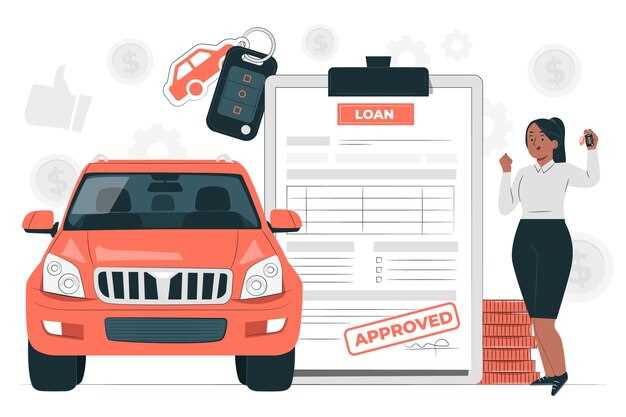
When considering a car loan, the down payment plays a critical role in shaping the overall terms of the loan. A substantial down payment not only reduces the total amount financed but can also lead to more favorable interest rates and monthly payments. By putting a higher percentage of the car’s price upfront, borrowers establish equity in the vehicle from the outset, which can decrease the lender’s risk.
The relationship between the down payment and loan terms is significant. A sizable down payment often results in lower monthly payments, making the loan more manageable over time. Additionally, lenders may view borrowers with larger down payments as more creditworthy, which can facilitate access to better interest rates and repayment conditions. Understanding this dynamic can empower consumers to make informed decisions when purchasing a vehicle.
How a Larger Down Payment Reduces Your Monthly Payments
When financing a car, the size of your down payment plays a crucial role in determining your monthly payment amounts. A larger down payment immediately decreases the total loan amount, which directly impacts your monthly payment. For example, if you are purchasing a vehicle priced at $30,000 and you make a $6,000 down payment, your financed amount becomes $24,000. Conversely, if your down payment is only $3,000, you would need to finance $27,000, leading to higher monthly payments.
Additionally, a larger down payment can influence your loan terms, potentially allowing you to qualify for better interest rates. Lenders often view a substantial down payment as a sign of lower risk, which can translate to more favorable financing conditions. Lower interest rates mean that less interest accumulates over the life of the loan, further reducing the monthly payment.
Moreover, making a larger down payment decreases the loan-to-value ratio (LTV). A lower LTV ratio can enhance your approval chances, leading to better financing terms. This effect not only lowers monthly payments but also provides a cushion against depreciation, ensuring that you owe less than your vehicle’s worth.
In summary, a larger down payment directly reduces the financed amount, potentially lowers your interest rate, and decreases the loan-to-value ratio. This combination significantly contributes to lower monthly payments, making it a strategic move when acquiring a new vehicle.
Analyzing the Influence of Down Payment on Interest Rates

A down payment plays a crucial role in determining the interest rates for car loans. Lenders assess the risk associated with financing a vehicle, and a substantial down payment can significantly influence their decision-making process.
Here are key factors illustrating how down payments affect interest rates:
- Reduced Loan Amount: A higher down payment lowers the total amount financed, which can lead to better interest rates. Less money borrowed typically translates to lower risk for lenders.
- Positive Equity: Making a larger down payment ensures positive equity right from the start. This can make lenders more confident and willing to offer lower rates.
- Creditworthiness: A significant down payment may also indicate to lenders that the borrower is financially responsible, which can enhance their creditworthiness and lead to favorable interest rates.
- Lower Monthly Payments: With a higher down payment, the loan balance decreases, resulting in lower monthly payments. This can be an attractive option, making it easier for borrowers to manage their finances.
- Loan-to-Value Ratio (LTV): A larger down payment improves the LTV ratio. Lenders often prefer a lower LTV ratio as it signifies that the borrower has more at stake, thus reducing the lender’s financial exposure.
Ultimately, the size of the down payment can significantly impact the interest rates offered. Borrowers should consider putting down more upfront to benefit from better loan terms.
Understanding Down Payment Requirements for Different Financing Options

When considering a car purchase, the down payment plays a crucial role in determining the overall financing terms. Different financing options have varying requirements regarding the down payment, which can significantly affect monthly payments and loan approval processes.
For traditional auto loans, lenders often require a down payment of 10% to 20% of the vehicle’s purchase price. A larger down payment can lead to better interest rates and reduced monthly payments. It also lowers the risk for lenders, improving the chances of approval.
Leasing typically has lower down payment requirements compared to buying. Many lease agreements do not mandate any down payment, although making one can help lower monthly payments. It’s essential to read the lease terms carefully, as the down payment can influence the total cost of the lease.
Financing through dealerships may offer flexibility in down payment options. Some may provide programs that allow for little to no down payment, particularly for qualified buyers. However, these options can come with higher interest rates and longer loan terms, leading to increased total costs over time.
Government-backed loans, such as those offered through programs for first-time buyers, often have specific down payment requirements. These can range from 0% to 5%, encouraging more individuals to enter the market. Understanding these options can help buyers choose the best financing strategy while considering their down payment capacity.
Overall, the down payment requirement varies significantly among financing options. Buyers should assess their financial situations and explore different programs to ensure they make informed decisions regarding their down payments.





